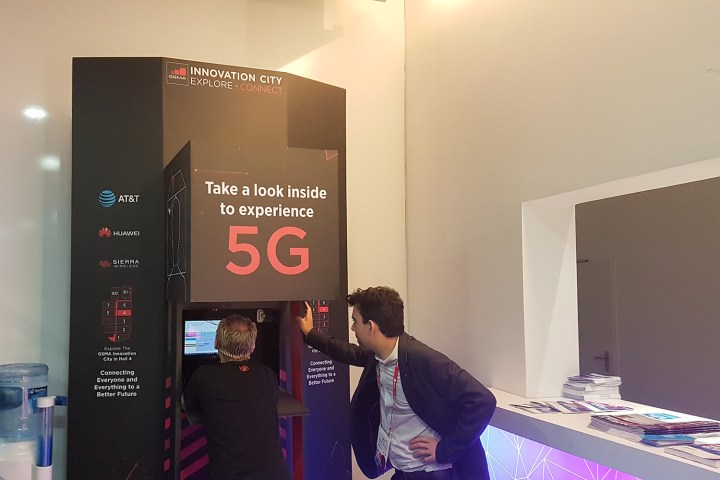
The hype machine was in full effect at MWC 2017 in Barcelona, Spain. The dawn of 5G, a standard that still has no agreed definition, and is almost certainly at least three years away, seems to be at the top of everyone’s agenda.
5G isn’t anywhere near ready
Samsung kicked off its press conference with a section on its new 5G technologies, and a spokesperson from Verizon took to the stage to talk about the
The truth is that 5G, in and of itself, will not transform your life.
The 5G buzz didn’t end there. ZTE dived into a long technical presentation of
To get a sense of how silly this all this, consider that the International Telecommunication Union (ITU) only released a draft report on 5G specs a few days ago. It suggested that a single cell must have a minimum download capacity of 20GB per second, that the standard needs to support up to 1 million devices in a square kilometer, and that carriers must have at least 100MHz of free spectrum, but ideally 1GHz.
We are a long way away from that and to get there will be enormously expensive. Who is going to pay for it? The same carriers and operators that have taken so long to roll out 4G? In the U.S., 4G LTE average speeds vary from carrier to carrier, but no one is averaging as much as 17Mbps yet, according to Open Signal. Shouldn’t we shoot for the upper end of 4G before we start hyping what is next?
5G is about more than speed
Network upgrades have traditionally been focused on the amazing speed benefits we can enjoy but it seems that 5G is really about coping with exponential expansion of devices and data demands. It might be an umbrella term that actually encompasses a wide range of different technologies. For regular folks, it should provide seamless and fast connectivity for a growing variety of devices.
Instead of gaining the dubious capability to fill our phone storage in two seconds, it’s actually about ensuring the connectivity we currently enjoy doesn’t deteriorate or fall apart under the increased strain. The numbers don’t have any real meaning for regular people right now.
Trying to sell the upgrade to 5G as a wonderful benefit for the average smartphone buyer is disingenuous. As the spectrum grows increasingly crowded, we will certainly have to find ways to expand bandwidth but this a technical problem, not a selling point. Employing a term like
Before we get anywhere near real 5G, we will have to endure all kinds of halfway measures trying to distinguish themselves from 4G. Huawei talked about 4.
ZTE generated some excitement about its Gigabit phone, but the device on display (under glass) at its stand is just a bulky prototype, not a real product. Sony says the forthcoming XZ Premium supports 1Gbps download speeds and at least it is real, but no network can deliver those speeds yet. When they do get there, that kind of speed will still be confined to central urban areas for several years, at least.
It’s also worth remembering that 1Gbps speeds are the upper end of 4G. We don’t need 5G to get there. Even if you want to seamlessly stream a 4K HDR movie to your phone, you don’t need anywhere near that speed. It’s hardly a pressing concern, is it?
5G is a loaded word
The truth is that 5G, in and of itself, will not transform your life. At some point in the future, it might be a prerequisite for great driverless cars, more home automation, and the much-promised Internet of Things revolution, but it’s not something you need to worry about for at least a few years yet.
Don’t get me wrong, the potential for 5G to enable some exciting developments and improve how the next wave of devices works is there, but the
The average person, myself included, would settle for decent, affordable and reliable 4G LTE speeds. Deliver that, carriers and phone makers, and then we can start talking about the next step.
Editors' Recommendations
- Visible’s affordable 5G plans just got even cheaper
- Have T-Mobile? Your 5G service is about to get much faster
- TCL’s new Android phones are coming soon, and they look promising
- Everything you need to know about the massive AT&T outage
- T-Mobile just set another 5G speed record







